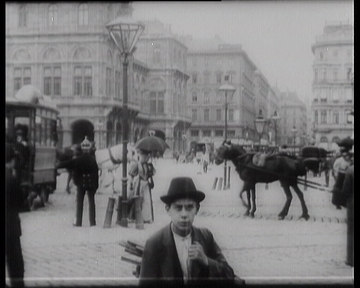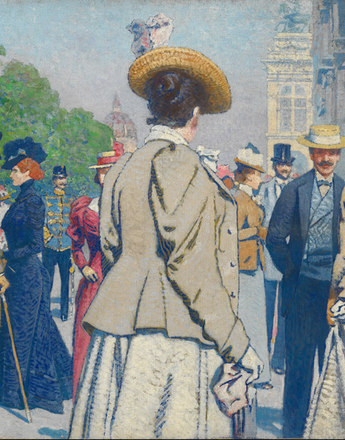‘Numbers’ – jewels from all over the world

Le Ring, film, F 1896
Copyright: Filmarchiv Austria
Partner: Filmarchiv Austria
The selection of films was based on the ‘fairground attraction’ principle. Like vaudeville, the ten or fifteen films in a cinema programme were seen as ‘numbers’, a collection of attractive short films designed to entertain the public.
The films were very short (sometimes less than one minute in length) and were almost exclusively made in a single shot. They were arranged in an effective and entertaining succession, avoiding repetition and similar items and endeavouring to achieve as much contrast as possible. The ‘numbers’ were a mixture of current events, films about technology and nature, travel and landscape pictures and comical interludes. The film pioneers and performers based their productions on established media – illustrated magazines, novels, illustrated stories and postcards – and popular theatre, Kaiserpanoramas and special effects.
In the early days of cinematography, the travelling shows were dominated by non-fictional items. Two forms dominated: Naturaufnahmen or ‘nature recordings’ – travel pictures of cities, landscapes and exotic customs – and industrial pictures, manufacturing and work processes. These early films were clearly influenced by a voyeuristic/exhibitionist approach, and the prying camera and posing by the subjects are evident. Landscapes were shot from above or swept by the camera. Close-ups showed work processes in detail. Workers or passers-by were shot posing in front of the camera and exchanging looks, and the act of being filmed was a constant subject.
Travel pictures were particularly popular and offered a mixture of sights such as parks, picturesque landscapes, monuments, magnificent buildings, cityscapes, fairs, exotic animals, strange customs and traditions. Long shots alternated with pictures of busy streets or interesting buildings. Vienna was also a popular subject in these travelling shows in the early days of cinematography. The film Le Ring shot in 1896 shows the busy activity on the thoroughfare. The camera was set up at ground level opposite the Opera looking down Kärtner Strasse. The angled shot with lampposts breaks up the image attractively, while the projecting buildings add depth. Passers-by and carriages moving directly towards the camera give a feeling of actuality. The camera puts the observer right in the heart of the action.
Translation: Nick Somers
Garncarz, Joseph: Der nicht-fiktionale Film im Programm der Wanderkinos, in: Jung, Uli/Loiperdinger, Martin (Hrsg.): Geschichte des dokumentarischen Films in Deutschland, Band 1, Kaiserreich 1895–1918, Stuttgart 2005, 108-119
Müller, Corinna: Variationen des Filmprogramms. Filmform und Filmgeschichte, in: Müller, Corinna/Segeberg, Harro (Hrsg.): Die Modellierung des Kinofilms. Zur Geschichte des Kinoprogramms zwischen Kurzfilm und Langfilm (1905/6–1918), München 1998, 43-75
-
Chapters
- Projection shows – precursors of the cinema
- The first cinematograph in Vienna – a medium takes Austria-Hungary by storm
- From travelling show to cinema
- Roll up! Performances, attractions, shows and sound experiences
- ‘Numbers’ – jewels from all over the world
- From ‘view’ to narration: genres and stars
- Austrian film pioneers


